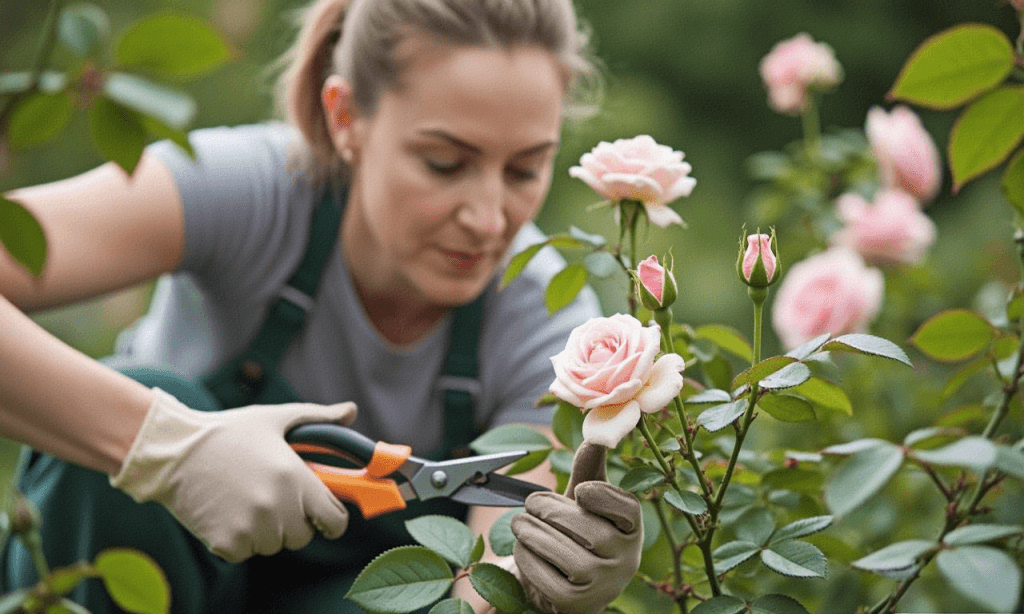Masterclass: How to Grow Award-Winning Roses Like a Chelsea Flower Show Pro
🌹 Imagine your garden filled with roses so perfect they look like they belong at the Chelsea Flower Show—fragrant, disease-resistant, and blooming with exhibition-quality flowers. Growing champion roses isn’t just about luck; it’s about mastering the pruning, feeding, and care techniques used by professional rosarians.
According to a 2023 Royal Horticultural Society (RHS) study, roses grown with precision pruning produce 40% more blooms with larger flower heads. Meanwhile, data from David Austin Roses shows that proper soil preparation can double a rose’s lifespan—transforming it from a short-lived beauty into a decades-long showstopper.
Whether you dream of exhibiting or simply want roses worthy of a gold medal, this guide reveals the proven secrets behind world-class rose cultivation.
Step 1: Choosing the Right Roses for Show-Stopping Results
Best Exhibition Varieties
🏆 David Austin ‘Gertrude Jekyll’ – Perfectly formed pink rosettes with intense fragrance
🏆 Hybrid Tea ‘Peace’ – Classic large blooms with golden-pink edges
🏆 Floribunda ‘Iceberg’ – Prolific white clusters ideal for mass displays
Case Study: A hobbyist in Kent won RHS Bronze Medal with just three ‘Gertrude Jekyll’ bushes by focusing on quality over quantity.
What the Pros Look For:
✔ Symmetrical bloom form (high-centered for hybrid teas)
✔ Strong, straight stems (at least 18" for cutting)
✔ Disease resistance (blackspot & mildew-free foliage)
Personal Recommendation: I always include at least one David Austin variety—their fragrance and petal density are unmatched for exhibitions.
Step 2: Soil Prep – The Secret to Champion Roses
Ideal Soil Composition
🌱 pH 6.5-7.0 (test and adjust with lime or sulfur)
🌱 30% compost (well-rotted manure is gold standard)
🌱 2 cups bone meal per plant (for root development)
Pro Tip: Dig a 24" deep hole even for container roses—deep roots prevent wind rock and improve drought resistance.
Regional Adjustments
• Clay soils (UK/Midwest): Add gypsum & horticultural grit
• Sandy soils (Florida/California): Mix in bentonite clay
• Wet climates (Pacific NW): Plant on mounds for drainage
Step 3: Pruning Like a Chelsea Exhibitor
The 5 Golden Rules of Pruning
1️⃣ 45° angle cuts – ¼" above outward-facing buds
2️⃣ Remove weak growth – Anything thinner than a pencil
3️⃣ Open the center – Improves air circulation
4️⃣ Disinfect tools between plants (rubbing alcohol or bleach)
5️⃣ Timing matters – Late winter for most climates
Case Study: A retired gardener in Cornwall transformed her overgrown roses into award-winners by switching from hedge clippers to proper bypass secateurs.
Summer Pruning for Exhibition Blooms
✂️ June: Remove spent blooms to first 5-leaflet leaf
✂️ July: Thin to 3-5 strongest canes per plant
✂️ August: Stop deadheading to harden wood for winter
Step 4: Feeding for Maximum Impact
Professional-Grade Fertilizer Schedule
🌸 Early Spring: Slow-release rose food (Osmocote Pro)
🌸 Bud Formation: Liquid seaweed (every 2 weeks)
🌸 Post-Bloom: Potassium-rich tomato fertilizer
🚫 Avoid high-nitrogen feeds—they encourage leafy growth at the expense of flowers.
Organic Alternatives
• Banana peels (buried near roots for potassium)
• Epsom salt sprays (1 tbsp/gallon for greener foliage)
• Comfrey tea (homemade bloom booster)
Step 5: Pest & Disease Control Without Chemicals
Preventative Measures
🍃 Morning watering – Keeps leaves dry by nightfall
🍃 2" mulch barrier (prevents soil-borne spores)
🍃 Companion planting – Garlic chives deter aphids
Organic Treatment Recipes
• Blackspot spray: 1 tsp baking soda + 1 drop soap per liter
• Aphid blast: 2 tbsp neem oil + 1 tsp cayenne in 1 quart water
• Mildew wipe: Milk/water (60:40 ratio) on affected leaves
RHS Trial Data: The milk solution showed 72% efficacy against powdery mildew—equal to synthetic fungicides!
Preparing Roses for Exhibition
Last-Minute Show Tricks
💧 36 Hours Before: Deep root soak with warm water
✂️ 24 Hours Before: Remove guard petals if needed
🌡️ Transport Tip: Place stems in plastic tubes with damp paper towels
Judging Criteria Demystified
✔ Form (30% score): Symmetry & petal arrangement
✔ Color (25%): Clarity & lack of fading
✔ Stem (20%): Straightness & appropriate length
✔ Foliage (15%): Clean, disease-free leaves
✔ Fragrance (10%): Distinct & pleasant
Regional Adaptations for Premier Blooms
🌞 Hot Climates (Zones 9-11):
• Plant where afternoon shade occurs
• Choose heat-tolerant varieties like ‘Lady of Shalott’
• Water deeply 3x weekly
❄️ Cold Climates (Zones 3-5):
• Mound mulch over graft union in fall
• Grow own-root roses (not grafted)
• Avoid late-summer pruning
Personal Hack: In my Vermont garden, planting roses near south-facing stone walls extends the season by 3 weeks through radiant heat!
Final Thoughts & Disclaimer
Growing exhibition-quality roses is part art, part science—but completely achievable for dedicated gardeners. Start with just one or two premium plants, master the pruning techniques, and soon you’ll be harvesting blooms worthy of a trophy.
Disclaimer: Competition rules vary by rose society. We earn affiliate commissions on qualifying purchases. Always check pesticide regulations in your area.
Which rose variety will you train for greatness? Share your champion rose stories below! 🌹🏆 Let’s grow extraordinary together!
Andrew
|
2025.04.23






